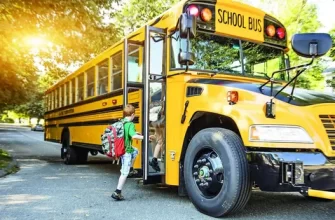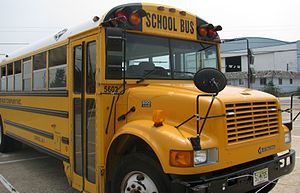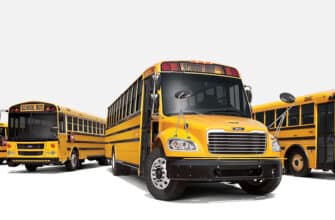Bullying…You can prevent it on the bus…
Bullying on the school bus is a growing concern among districts, but recognizing the signs of bullying and knowing how to react to the situations can help ease tensions and eliminate problems.
Why Bullies Pick The Bus
For bullies interested in picking on their peers, the school bus is an ideal location. Supervision is generally minimal – before boarding the bus, the hectic rush of activity makes small bullying tactics hard to notice, and while on the bus, the only adult is usually the driver, who can’t react to every incident because he or she is operating the vehicle. Because the bus is a small, closed space, victims of bullying have no place to run to, and they often have no choice but to ride the bus, making them easy and regular targets. This makes students vulnerable to intimidation and physical abuse on the bus. Bus drivers, parents, teachers and other students need to be aware of these problems and how to prevent them for the safety of everyone on the bus.

While there is no doubt that bullying is dangerous to the student being tormented – in addition to physical harm, constant bullying tactics can damage a child’s confidence, self-esteem and other personality traits – bullying is also dangerous to everyone on the vehicle. Because of the close quarters, other students can easily be drawn into the action, either as additional victims or succumbing to the peer pressure to be a bully themselves. Severe bullying can distract the bus driver, increasing the risk of vehicular accidents that can severely injure students, other motorists and pedestrians. Bullying can also disrupt students’ education by making them fearful of going to school and forcing them to focus on the intimation rather than learning. Plus it can result in potential disaster…
Students in an Ohio city were riding a school bus when a boy took a video game from one of his peers and teased him. The boy tried to retrieve his game, but his bully tripped him and then began laughing. When the student got up, his bully’s demeanor changed — the boy had a bloody nose.
The driver attempted to assess the situation from her rearview mirror but stopped when she realized she ran a red light and was going to hit the truck in front of her. She tried to brake but was too late — she slammed into the truck head-on.
The risk to everyone on that bus, as well as those outside the bus, was signifigantly increased by ONE bully. Thankfully, this is a ficticious story, but it is one that could EASILY occur.
Signs Of Bullying
Report losing items such as books, electronics, clothing, or jewelry.
Have unexplained injuries.
Complain frequently of headaches, stomach aches, or feeling sick.
Hurt themselves.
Lose interest in visiting or talking with friends.
Are afraid of going to/from school or other activities with peers.
Appear sad, moody, angry, anxious, or depressed.
Talk about suicide.
Suddenly have fewer friends.
Avoid certain places.
Act differently than usual.
Want to sit near the driver.
Want to sit with the same “safe” student or group of students all of the time (behind them, in front of them, or surrounded by them).
Want to sit on the inside seat—not the aisle seat.
FACTS
It is estimated that nearly ONE IN FIVE students is subjected to school bus bullying
Of students ages 12 through 18 surveyed in the 2006–07 school year:
A total of 31.7 percent report being bullied.
Of those, 8 percent say they were bullied on the bus.
What Can The Bus Driver/Monitor Do?
Recognize and Name bullying behaviors
Move the bullying child near the driver
Give a verbal warning
Watch for future occurrences
Follow the school reporting procedures
Discuss proper behavior with studentsCreate a climate where children know that the bus driver cares and they ARE safe on the bus
The driver is generally the only potential adult witness available during a school bus incident and is generally the only adult — in terms of immediacy — to prevent bullying, stop existing bullying from escalating, or end physical bullying once it starts on a school bus.
Some other strategies you can use include establishing a positive atmosphere on the bus, and being clear, fair, and consistent about rules; treating students the way you want to be treated and the way you want them to treat each other; getting to know all of the students on the bus, including bullies; and learning and using student names.

I hope this page has helped you to see a problem that is growing by leaps and bounds, but fortunately, can be dealt with.
If you have any suggestions, please feel free to email me. Just click my name below…










